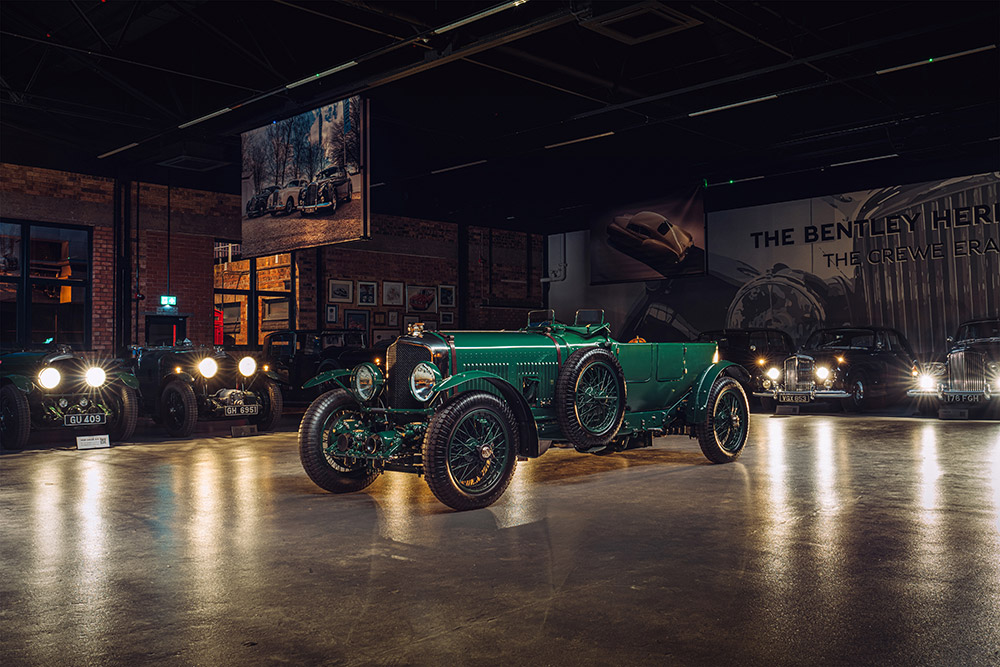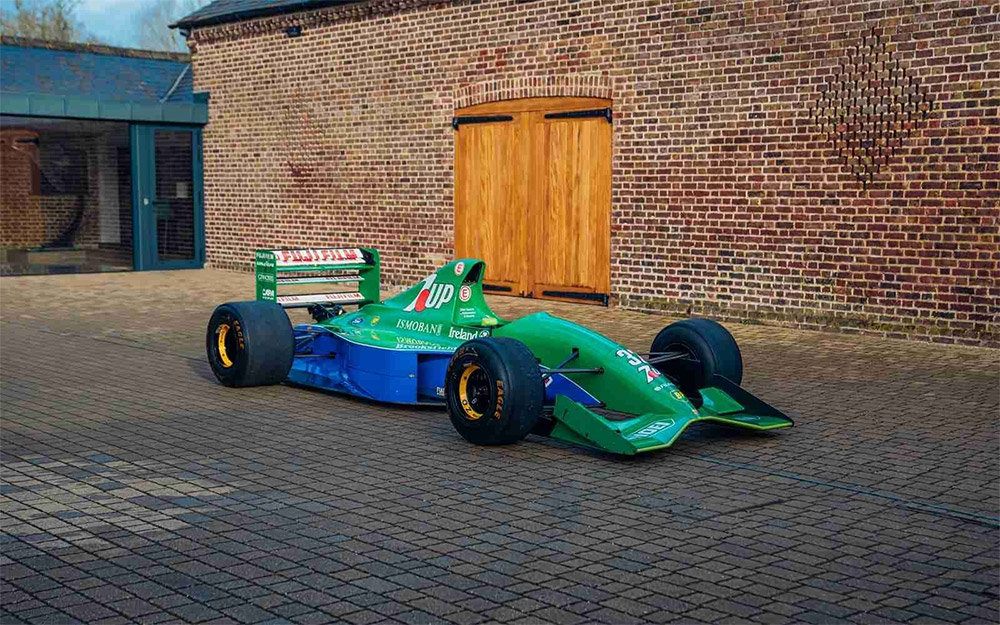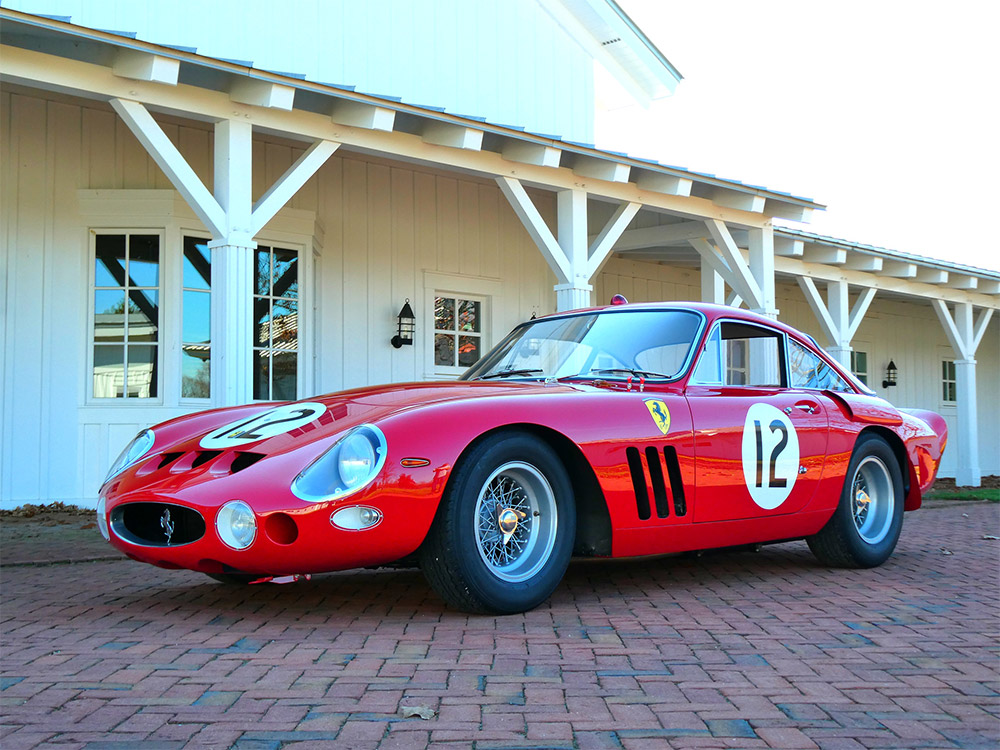The first new Speed Six in 93 years will makes its global debut at this year’s Goodwood Festival of Speed. The most successful Bentley racing car ever, the Speed Six is regarded as one of the most important Bentleys in history. The newest Speed Six – Car Zero – will be used in a development programme consisting of real-world durability and track based testing, before being retained by Bentley ahead of the build of 12 customer cars – all of which are already sold.
So much more than a replica, a continuation car is built to the same designs, using the same processes, as the original car that inspires the series. The Speed Six is the second pre-war Continuation Series by Mulliner, Bentley’s bespoke and coachbuilding division, following the Blower Continuation Series which itself was the first pre-war continuation ever created.
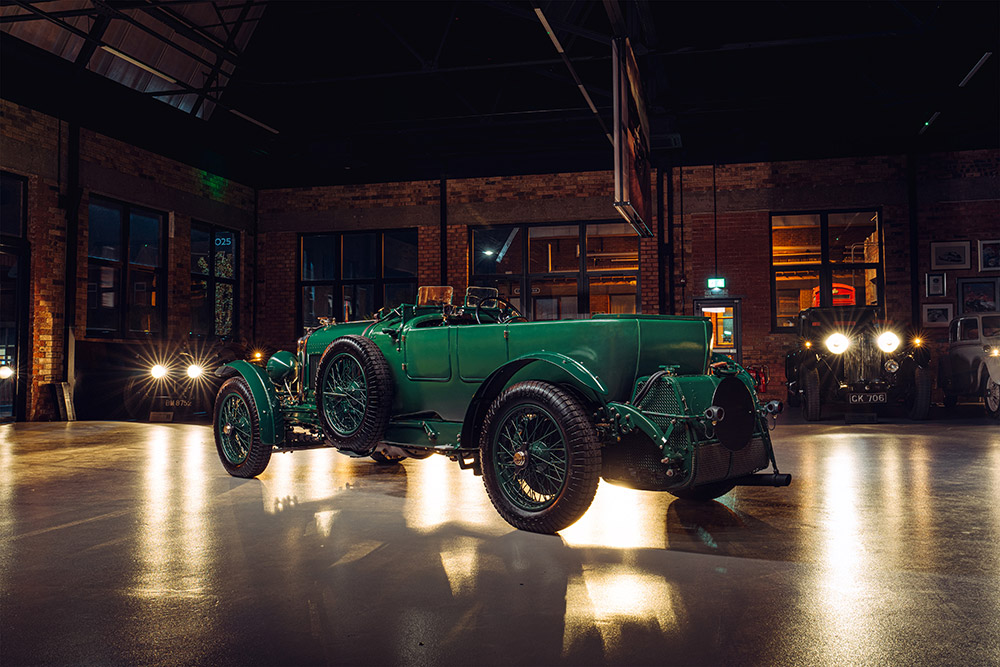
Extensive research has been undertaken to ensure the content of the Speed Six is correct and authentic, with particular focus on the specification and setup of the original cars for the 1930 24 Hours of Le Mans. As many original drawings have been used as possible; with 80% of the originals found via the WO Bentley Memorial Foundation. The drawings have been supplemented by original mechanic’s notes that detailed the changes between the 1929 and 1930 races, alongside data taken from the 1930 Speed Six in the Bentley Heritage Collection and an original 1930 Le Mans racer, known as Old Number 3.
In excess of 600 individual new parts have been required for the creation of the new 6½-litre six-cylinder race spec engine. Initial dyno testing has shown the first engines to develop 205 bhp at their peak, within 5 bhp of that documented for the original race-tuned engines in 1930.
Many of the authentic materials used on the Blower Continuation Series have also been utilised for the Speed Six, particularly on a number of the trimmed elements. Mulliner team members revisited the archives at the National Motor Museum in Beaulieu, Hampshire in order to offer five authentic period Parsons exterior paints. Speed Six Car Zero is finished in Parsons Napier Green, with an interior in Tan leather.
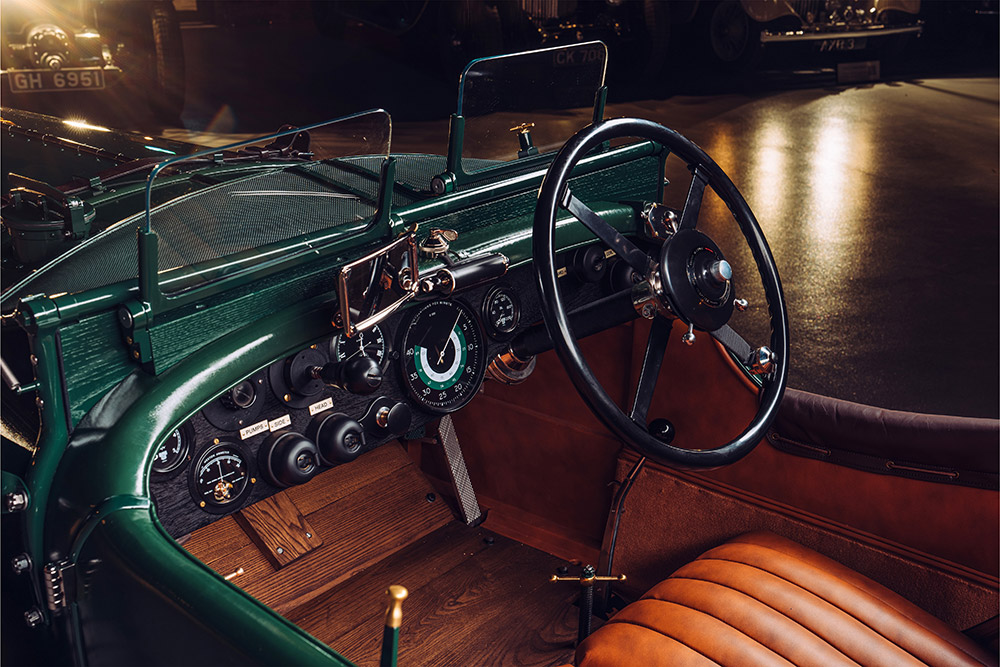
Speed Six Car Zero has been built over the last ten months by an exceptionally skilled team of Mulliner artisans and specialists. As with the Blower Continuation Series, a major driver of the Speed Six programme is the development and retention of modern and traditional coachbuilding skills, and the build has seen craftspeople with decades of experience working alongside the younger generation so that skills are passed on. The finished car is a work of art, having been built and trimmed entirely in the Mulliner workshop at Bentley’s Dream Factory in Crewe.
Over the next six months customers will have chance to discuss their specifications in further detail in personal commissioning sessions. Customers will be offered a personal fitting service in the second development car, known as Speed Six Factory Works, to ensure each car is built to each individual customer’s comfort needs.
The validation programme for Speed Six Car Zero is comparable to that for Blower Car Zero, and will include real world mileage accumulation and two race simulations.
The History Of The Speed Six
The Speed Six became the most successful racing Bentley in history, as a high-performance version of the 6½ Litre, and won Le Mans in 1929 and 1930 at the hands of Woolf Barnato, Sir Henry ‘Tim’ Birkin and Glen Kidston.
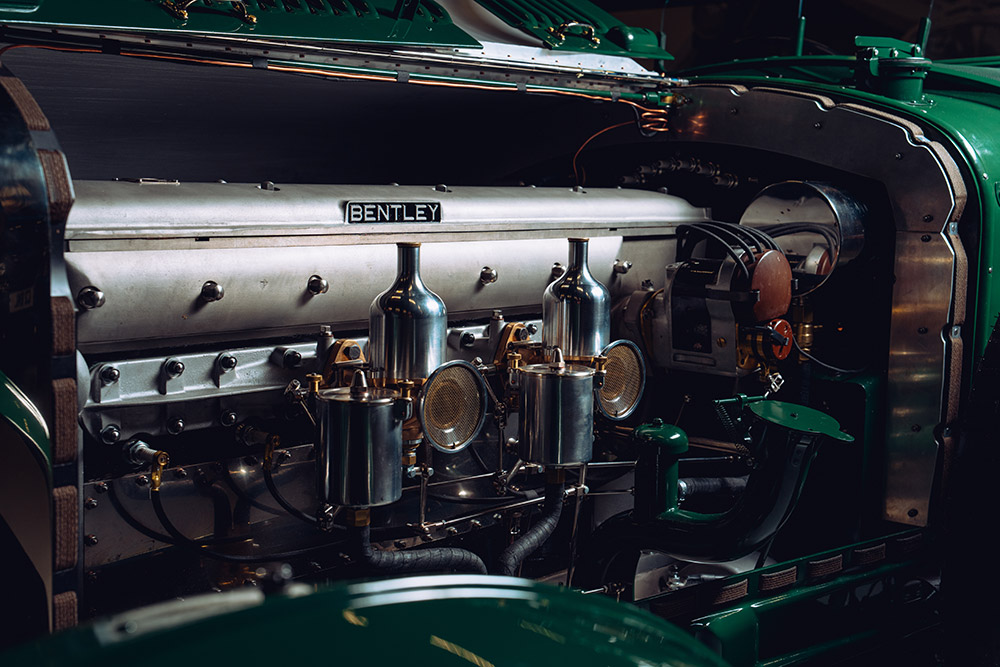
W.O. Bentley believed that the best way to increase power was to increase capacity, as opposed to Tim Birkin’s faith in supercharging. He therefore developed a new, larger engine to succeed the 4½-litre. With a bore of 100 mm and a stroke of 140 mm, his new straight six had a capacity of almost 6.6 litres. In base form, with a single Smiths five-jet carburettor, twin magnetos and a compression ratio of 4.4:1, the 6½ Litre delivered 147 bhp at 3500 rpm. 362 examples were built at Bentley’s factory in Cricklewood, North London, on a variety of chassis of different lengths depending on the body style requirements of individual customers.
The Speed Six chassis was introduced in 1928 as a more sporting version of the 6½ Litre. The engine was modified to liberate more power, with twin SU carburettors, a higher compression ratio and a high-performance camshaft, responsible for an increase to 180 bhp. The Speed Six chassis was available to customers with wheelbases of 138 inches (3,505 mm), 140.5 inches (3,569 mm), and 152.5 inches (3,874 mm), with the short chassis being the most popular. 182 Speed Six models were built between 1928 and 1930, and the factory race cars were built on a 134 inch (11’2”) chassis frame.
The racing version of the Speed Six had a further-developed engine running a compression ratio of 6.1:1 and producing 200 bhp. Two wins at Le Mans in 1929 and 1930 cemented the Speed Six’s place in Bentley history, with the 1929 victory setting a new benchmark for dominance at the race. Driven by Woolf Barnato and Sir Henry ‘Tim’ Birkin, a Speed Six led from the first lap until the chequered flag, followed by a procession of three other Bentleys. A new lap record of 7:21 had been set by Birkin, taking 46 seconds off the previous best and requiring an average speed of 83 mph, and in covering a 2,844 km distance, a further record was also attained. Such a dominant performance by one manufacturer was not seen again at Le Mans for nearly 30 years.
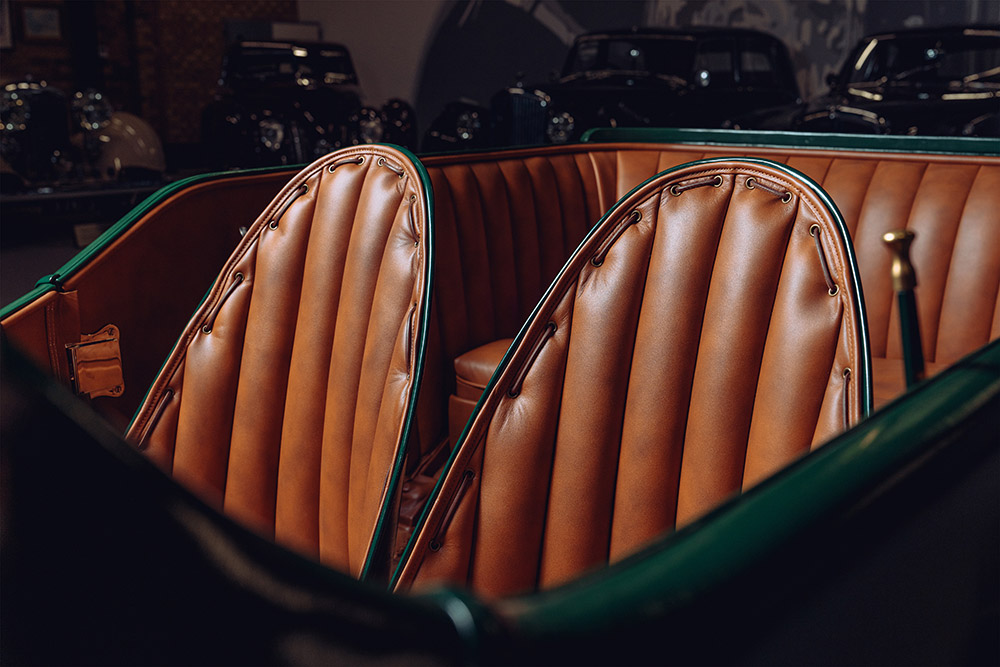
Real Life Endurance
Speed Six Car Zero, which will be displayed at this year’s Goodwood Festival of Speed, will show further instrumentation that will not be fitted to customer cars. This has been added to the car to support the validation process and record many different aspects of data during the next six months.
With the build of Car Zero now complete, a programme of real-world durability testing will begin. The test programme is designed to achieve the equivalent of 35,000 kilometres of real-world driving across 8,000 kilometres of track driving. Intervals of gradually increasing duration and speed will check functionality and durability under the most challenging conditions; giving confidence in future customer cars.
The first customer car will start build in October of this year, and the series of 12 customer cars is due to be completed by the end of 2025, with each car taking 10 months to complete.


